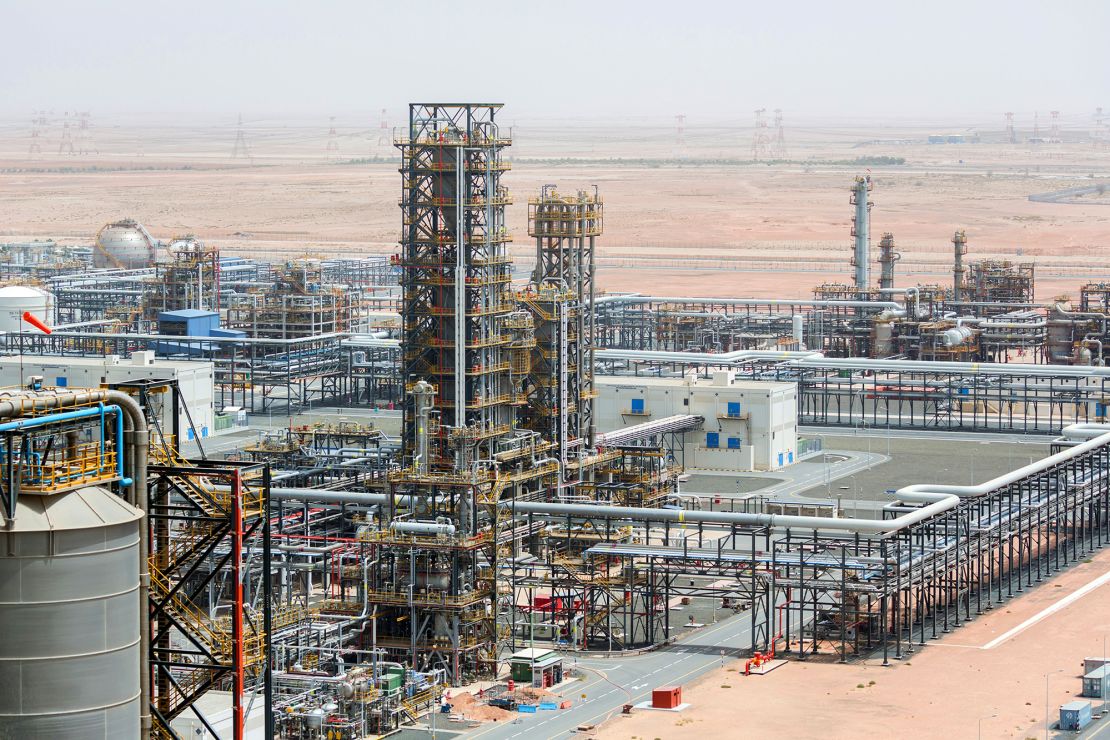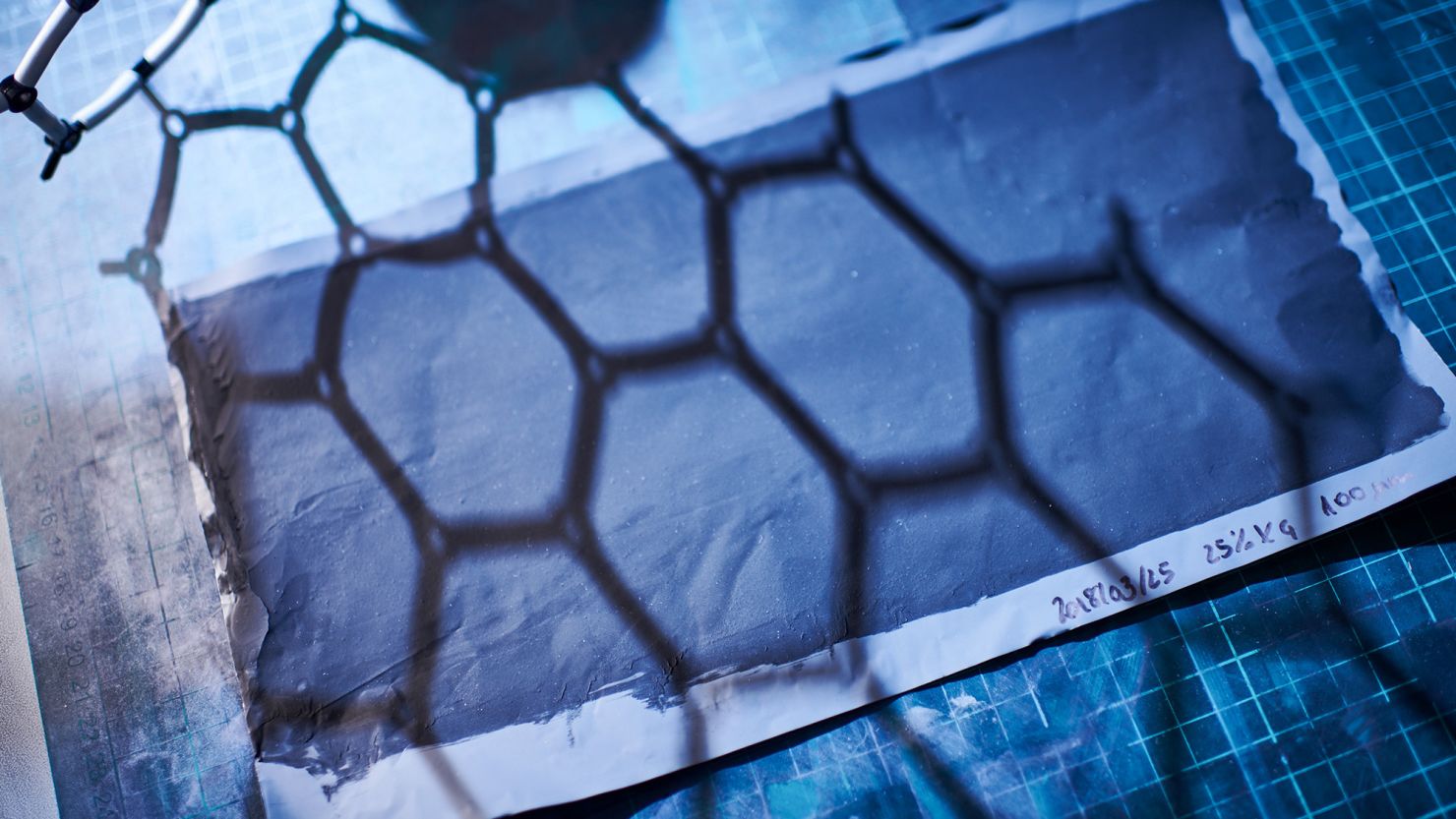Often referred to as a “miracle material,” graphene is one million times thinner than a single human hair and stronger than steel.
The two-dimensional carbon material, made from single layers of graphite, a material mined from the ground, is extremely lightweight, conductive, and flexible, and has the potential to deliver transformational technologies across industries, from electronics to transportation.
Now, researchers at Khalifa University in the United Arab Emirates (UAE) are exploring another use for graphene: producing drinking water.
“Here in the United Arab Emirates, all of our potable water is actually desalinated water, so it’s a very critical sector of the economy as well as society,” says Hassan Arafat, senior director of the university’s Research & Innovation Center for Graphene and 2D Materials (RIC2D).
Desalination is the process of removing salt from seawater, and cleaning the water to make it drinkable. It isn’t just vital in the UAE: more than 300 million people globally rely on desalinated water. And as climate change and pollution threaten our limited fresh water supplies, that number will increase.
But desalination is a costly and energy-intensive process.
That’s where graphene comes in: Arafat is working on a graphene-enhanced membrane that could make the process more efficient and cheaper.
“This year, we have seen a massive number of calamities due to climate change,” says Arafat. “Water shortage is a global problem, and it’s becoming worse by the day. Knowing that we are contributing to the solution of these problems is very fulfilling.”
Desalination solutions
RIC2D was established in 2022 at Khalifa University, with investment from the government of Abu Dhabi, to further research into graphene innovations and its production.
While Arafat’s role as senior director gives him an overview of many projects, his own research is focused on water.
Arafat says that graphene can extend a membrane’s life by preventing “fouling,” which happens when bacteria accumulate on the filter and degrade the quality. Using graphene to “enhance the performance” of filters could help reduce energy usage and cut costs for desalination, says Arafat.
“Even in small quantities, these graphene materials significantly improve the performance of the membranes in terms of their water production,” he adds.
Currently in the development phase, the membranes will be produced and scaled up next year at the UK’s University of Manchester, RIC2D’s partner in graphene research, says Arafat. After that, the membranes will be tested in a desalination plant.
Arafat isn’t the only one looking into graphene as a solution for desalination — startups like Watercycle Technologies are developing graphene-enhanced membranes to remove specific minerals from water, while Molymem is focused on dye removal — but Arafat claims that RIC2D’s membrane “out-performs” similar water filters in recent academic literature, and the partnership with the University of Manchester allows them to scale the technology for industrial testing.
RIC2D is also exploring other applications for graphene such as sustainable construction materials with the potential to reduce carbon dioxide emissions, and renewable hydrogen energy solutions.
Making graphene from methane
Despite its transformational potential, graphene has proven difficult and expensive to produce at scale.
One way to make it is by removing single layers from graphite, which has restricted its impact on mass-market solutions. However, researchers at RIC2D are working on ways to cut costs and time “without compromising the quality,” says Arafat.
Another production method uses plasma chemistry to extract carbon from gases such as methane — a greenhouse gas made up of carbon and hydrogen — that are by-products of the oil and gas industry.

The UAE is one of the top oil producers globally, and around 30% of the nation’s GDP comes from hydrocarbons. However, the UAE is eager to diversify its economy and is aiming for zero emissions by 2050.
Graphene could help with both ambitions.
RIC2D collaborated with UK startup Levidian, which developed its own plasma chemistry process to extract carbon from methane.
By leveraging the UAE’s supply chain, there is a “great opportunity to accelerate the adoption of graphene in support of climate change,” says James Baker, CEO of Graphene@Manchester, the graphene innovation center at the University of Manchester, which partnered with Khalifa University to establish the RIC2D lab in 2022.
Any carbon-based material — including waste from the oil and gas industry, or petroleum products like car tires — could be “effectively recycled or reused” to create chemically manufactured graphene, says Baker. “(There’s) a lot of interest in the UAE around the supply chain of producing graphene, and we’re working to really scale up production of this material from grams to kilograms to tons.”
There’s an added benefit in producing graphene from a gas like methane: the hydrogen extracted can be used as a fuel, says Baker. He adds that graphene-composite materials could also be used to store hydrogen in stronger pressure vessels.
“You’re not only de-carbonizing the waste, you’re using it, rather than putting it to a landfill or burning in it,” Baker adds.
Thinking globally
At the Graphene Flagship Week in September, an initiative funded by the European Union, RIC2D showcased multiple projects that are already on their way to commercialization, including a collaboration with French company Grapheal, which makes graphene-based biosensors, and a partnership with Turkish company NanoGrafen, which explores how to convert waste materials such as used tires into graphene products for composite construction materials.
However, “the more novel and groundbreaking and life-changing the idea is, the longer the path is to be is likely to be to its final commercialization,” says Arafat.
Arafat hopes that his research can have an impact in the Emirates and beyond. “While we’re starting locally, we’re certainly thinking globally,” he says.





